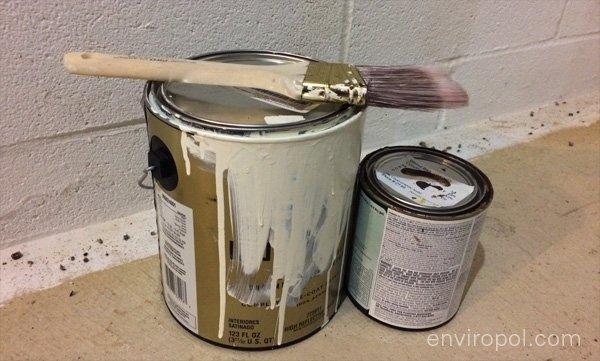Lead is a naturally occurring metal found in the environment. It can be present in the air, water, and land (including soils and dust). It is commonly found in our homes, places of worship, offices, and schools, but it is most frequently found in paint.
Where does Lead come from?
Lead is typically released into the environment during activities such as burning fossil fuels, manufacturing, construction, and demolition. Specifically, smelting, waste burning (incineration), mining, paint manufacturing and consumption, as well as the use of ammunition, can all contribute to the release of lead into the environment.

What products may contain Lead?
Paints, electrical equipment, and plumbing materials often contain lead. Additionally, lead can be found in ceramics, PVC, and jewelry.
Is Lead harmful?
Lead has damaging effects on our brains, central nervous systems, and hearts. Lead can also negatively affect the blood, kidneys, liver, and bones. Specifically in children, lead can cause irreversible damage. Since children’s organs are not fully developed, they are more susceptible to injury from contact with lead. In children, lead can lead to intellectual disability and premature death.
How does Lead get into our bodies?
Children can ingest lead by putting their toys in their mouths, inhaling dust and paint fumes, or drinking contaminated water. Water may become contaminated when old pipes corrode, break, or leak. Also, adults who work with batteries, recycling, paint, and in manufacturing plants may be exposed to lead through inhalation.
What are the symptoms of Lead poisoning in children?
Headaches, poor appetite, anxiety, stomach pain, and irritability are all symptoms of lead poisoning. However, these symptoms are not specific to lead poisoning alone and may sometimes be ignored until it is too late
How can a person avoid Lead?
Adults should use protective gear when working in gardens, manufacturing plants, and construction sites. This includes wearing gloves, respiratory masks, and other necessary equipment.
Children should avoid chewing on plastic and metal objects and should stay away from construction, building, renovation, and demolition areas where there is a lot of particulate matter in the air.
It’s important to support government regulations aimed at reducing the use of lead in paint products. Additionally, it’s crucial to support regular testing of drinking water and to ensure that all construction, manufacturing, and waste management plants adhere to best practices and policies.
What can a person do if he has been in contact with Lead
In many countries, a lead test for children is required for all parents. If you suspect that a child has been in contact with lead, inform your healthcare provider (doctors or nurses) immediately. They will conduct a blood test and provide guidance on what to do.
You should also inspect your home for any signs of paint wearing off the walls or cracks. Keep in mind that home repairs such as sanding, scraping, and painting can create hazardous lead dust. Ensure to regularly wipe and clean up all dust in your home.
References Lead Poisoning: http://www.cdc.gov/nceh/lead/tools/5things.pdf Lead factsheet: http://www.nclabor.com/osha/etta/A_to_Z_Topics/lead.pdf Lead, the silent killer stalks Kenya’s paint industry
